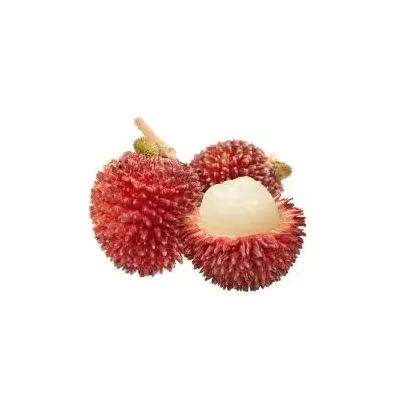



Pulasan is an evergreen ornamental tree similar to Rambutan. It has deep red, maroon coloured fruits which are very sweet. They have a good shelf life of 4-5 days at room temperature.

Pay using UPI, Card or Netbanking

Shipping within 3 working days
Pulasan is a high-quality fruit in terms of taste, appearance and shelf life. Although similar in appearance to rambutan, pulasan has specific care needs. Pulasan is generally devoid of pest attacks.
The inner core can be easily separated from the seed. The flesh can be used directly or as a seasoning in ice creams and puddings.
Pulasan is good for people with obesity as it helps reduce body fat. It softens the skin and prevents hair loss. Pulasan is also said to be good for diabetics.
Pulasan has been found to grow well in any soil with good fertility and moisture. However, high levels of organic matter in the soil can improve plant growth and fruit set.
Pulasan trees grow well in the plains and on the banks of monotonous rivers. Pulasan trees naturally like the high humidity and warmth of the atmosphere. It grows to a height of about 12 metres.
Despite its high quality fruit, pulasan is not much in cultivation commercially. The main reasons are the irregularity of flowering and fruiting and the emergence of "flat" fruits. However, it is an excellent fruit plant to grow on a homestead or even as an ornamental plant for its beautiful foliage.
As it is a "thermosensitive" plant, pulasan cannot withstand extra heat. A temperature of 22 to 32 degrees Celsius is recommended for proper plant growth.
It is best to keep the pH value of the soil between 5 and 6. The combination of microorganisms such as mycorrhiza has been shown to be very good for the growth of pulasan.
In addition, proper irrigation and the availability of sunlight are essential. The soil should be well drained.
Seedlings can be used as a root stock for budding. Since male and female plants grow on different trees, it should be ensured that the seedlings used for cultivation are grafted buds collected from high-yielding trees.
Such seedlings are best planted at the onset of the monsoon. Although Pulasan may adopt the same farming method as Rambutan, the availability of high levels of organic manure must be ensured.
During the hot summer months, the flowers begin to bloom in clusters on the apex of the pulasan. The flowering season of Pulasan is January–February.
In general, no diseases or pests attack Pulasan. The fruits are sometimes attacked by mites. The spraying of 10 ml of Verticillium per litre is very effective.
Some trees produce irregular fruits and, in some years, "flat" fruits. Studies have shown that the heterosexuality of flowers and a lack of pollination are the main reasons for the formation of flat pods. Spraying 5 g of potassium nitrate on flowers is effective in preventing this tendency. This should be applied three times at one-month intervals during the growing stage of the fruit.
However, without pollination, fruiting is natural in Pulasan. When no pollinators are available to ensure pollination, plant hormones such as Superfix (NAA) may be required to obtain pollinated pollen from the stamens of some bisexual flowers.
Data sheet